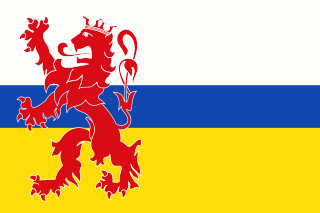
Limburg is the southernmost of the 12 provinces of the Netherlands. The province is bordered by the province of Gelderland to the north and by North Brabant to its west. Its long eastern boundary forms the international border with the state of North Rhine-Westphalia in Germany. To the west is the international border with the similarly named Belgian province of Limburg, part of which is delineated by the river Meuse. The Vaalserberg is on the extreme south-eastern point, marking the tripoint of the Netherlands, Germany and Belgium.

Roermond is a city, municipality, and diocese in the Limburg province of the Netherlands. Roermond is a historically important town on the lower Roer at the east bank of the river Meuse. It received town rights in 1231. Roermond's town centre has become a designated conservation area.
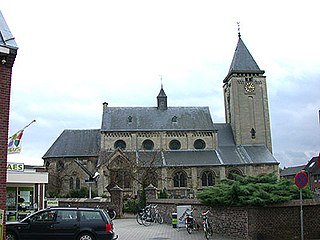
Echt-Susteren is a municipality in the southeastern Netherlands. Echt-Susteren was created in 2003 by merging the former municipalities of Echt and Susteren.

Redbad was the king of Frisia from c. 680 until his death. He is often considered the last independent ruler of Frisia before Frankish domination. He defeated Charles Martel at Cologne. Eventually, Charles prevailed and compelled the Frisians to submit. Redbad died in 719, but for some years his successors struggled against the Frankish power.

The House of Egmond or Egmont is named after the Dutch town of Egmond, province of North Holland, and played an important role in the Netherlands during the Middle Ages and the Early modern period. The main lines Egmond-Geldern, Egmond-Gavere and Egmond-Buren-Leerdam had high noble, princely rank.
The Generality Lands, Lands of the Generality or Common Lands were about one fifth of the territories of the United Provinces of the Netherlands, that were directly governed by the States-General. Unlike the seven provinces of Holland, Zeeland, Utrecht, Guelders, Overijssel, Friesland and Groningen, these territories had no States-Provincial and were not represented in the central government. From an economic point of view, they were exploited with heavy taxes and levies. As one author puts it:
"Back in the Dutch lap, these so-called Generality lands were for a long time governed as a sort of internal colonies, in which Catholics were seen as second-class citizens."

Susteren Abbey is a former Benedictine abbey at Susteren near Roermond, in the Dutch province of Limburg, founded in the 8th century. The former abbey church is now St. Amelberga's Basilica.
"Ons Gelderland" is the anthem of the province of Gelderland in the Netherlands.

Echt is a city in the Dutch municipality of Echt-Susteren in the province of Limburg, Netherlands. It was a municipality itself until it merged with the municipality of Susteren on 1 January 2003.
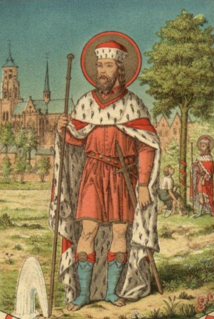
Saint Gummarus of Lier is a Belgian saint. He was the son of the Lord of Emblem. An official in the court of his relative Pepin the Younger or Pepin of Herstal according to some other sources, after a number of years in military service he retired to live the life of a hermit. The town of Lier grew up around his hermitage.

The Gelre Armorial is a medieval armorial.
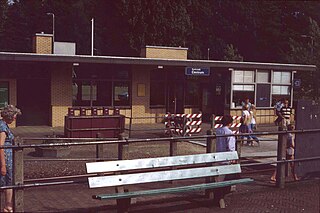
Kerkrade Centrum is a railway station in Kerkrade, the Netherlands. The station was built in 1933 on the Schaesberg–Simpelveld railway and is the eastern terminus of the Heuvellandlijn (Maastricht–Kerkrade). However, as the Dutch Railways deemed it unprofitable at the time, the station did not see passenger services until 15 May 1949, when regular passenger services finally commenced on the Schaesberg–Simpelveld railway. Train services were operated by Veolia until 11 December 2016, when Arriva took over.
Vilmos Halpern was a Hungarian football player and manager who managed Dutch side Ajax between 1940 and 1941, before moving to Dutch amateur side NOAD.

EVV, an abbreviation for Echter Voetbal Vereniging, is a Dutch association football club from Echt-Susteren, Limburg. Its colours are blue and white.
De Limburger is a Dutch newspaper covering the province of Limburg. The Limburgs Dagblad merged into De Limburger at the end 2017. Both newspapers were owned by Mediahuis. Dagblad De Limburger, the previous name of De Limburger, was founded after a merger of Dagblad voor Noord-Limburg and De Limburger.
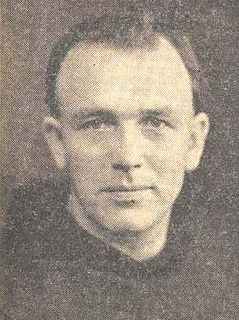
Salesius Lemmens, was a Dutch Franciscan friar who served as the Apostolic Prefect of the Catholic Church in Karachi, then a part of British India. He died at the age of 37 in a drowning accident.

Lilbosch Abbey is a monastery of the Trappists founded in 1883 and located in Lilboscherveld in Pepinusbrug, Echt, Limburg, in the Netherlands.

The Schwanenburg Castle, in North Rhine-Westphalia, where the Dukes of Cleves resided, was founded on a steep hill. It is located at the northern terminus of the Kermisdahl where it joins with the Spoykanal, which was previously an important transportation link to the Rhine.
The 2021–22 season will be the 54th season in the existence of Fortuna Sittard and the club's fourth consecutive season in the top flight of Dutch football. In addition to the domestic league, Fortuna Sittard will participate in this season's edition of the KNVB Cup.
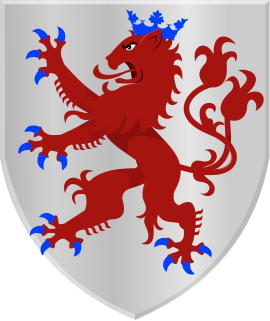
The brothers counts Willem II and Hendrik I, sons of Diederick IV count of Limburg Hohenlimburg Broich and Lukardis of Broich succeed each other as Count of Limburg Hohenlimburg Broich. In 1446, two years after the death of their father Diederick. The Archbishop of Cologne, after the conquest of Broich castle handed over his share of Broich to Willem II of Limburg. The Duke of Gullick-Berg also returned his share of Broich. Willem had to reconfirm provisions that his father Diederik IV had agreed upon in 1430. Brother Hendrik of Limburg continued to fight for the Cleves party. It was not until April 7, 1454, that he agreed to waiver of his Lordship rights to Broich.

















